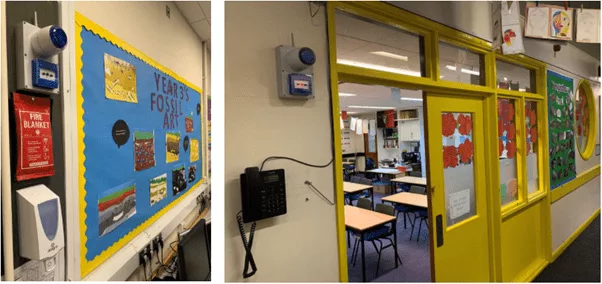The COVID pandemic has meant that for the past 11 months OFSTED has not been able to carry out normal school inspections. This has now all changed since January 2021 when Ofsted indicated that those schools judged inadequate will be top of the list for visits with the majority of inspections resuming after Easter.
Although some schools were inspected during the pandemic, the vast majority have been left to their own devices with obvious priorities around simply keeping the education process going. Undoubtedly some schools will have funds available to spend on resources in anticipation of the visits and whilst educational tools will take priority, the safety and security of the site will be a significant consideration.
Ofsted Inspections
As part of the Ofsted inspection, schools will be asked if they have a Lockdown Policy – this can be a simple document with guidelines – up until recently they have not had to have an actual Lockdown system installed. However, Ofsted now advocate a dedicated lockdown alarm to be in place, distinctive to the sound of the fire alarm. This is in line with advice from NACTSO (National Counter Terrorism Security Office) which states that the ‘use of fire alarms should be avoided to reduce incorrect response to an incident’. A poor showing with regards to the safety of pupils in the case of emergency will impact an Ofsted inspection negatively, therefore schools are looking to implement lockdown systems in accordance with their policy.
The Alertex system offers battery-powered units which can be deployed anywhere. They offer an audible AND visual alert to pupils and staff and are distinguishable from fire alerts which of course mean evacuate the building. The units can be quickly installed on the school site over a weekend or even at the end of the school day, thus minimising disruption to the learning environment. Battery life is around three years. A maximum of 64 units can be installed per site, up to 1km apart. When one Alertex device is activated it will trigger all units in range to sound an audible alert or lockdown message, accompanied by a flashing beacon light.
Both internal and external variants are available and decibel levels can be adjusted accordingly. There are 32 sounds to choose from. Alternatively, an annunciator variant can be ordered which has a built-in strobe with a standard lockdown message or the school may wish to record their own.
Altertex has been installed successfully in many schools around the UK and if you would like a copy of these case studies please email marketing@qedgroup.co.uk.
View the product range here
Or call our friendly and professional team on 01772 336 111.




